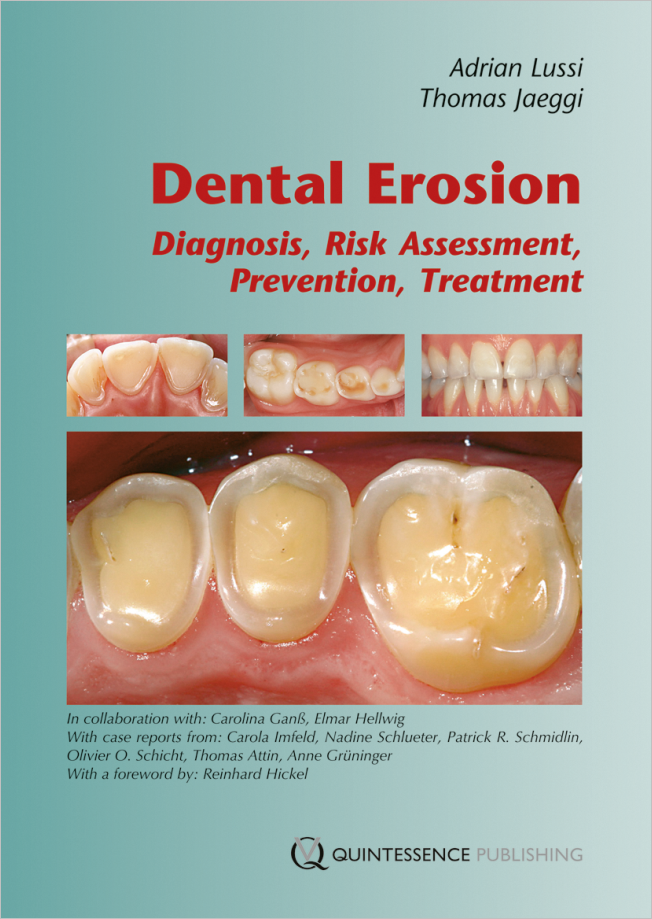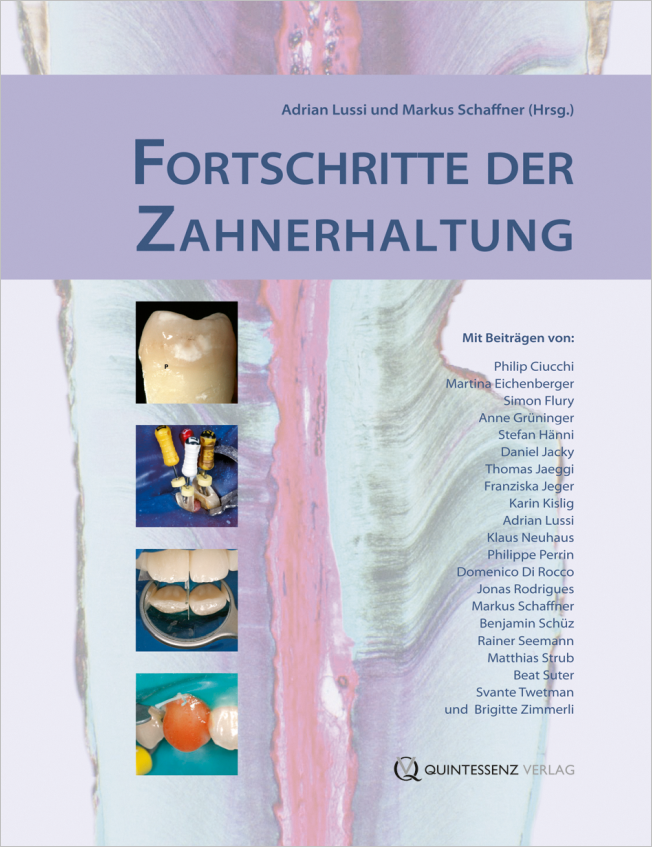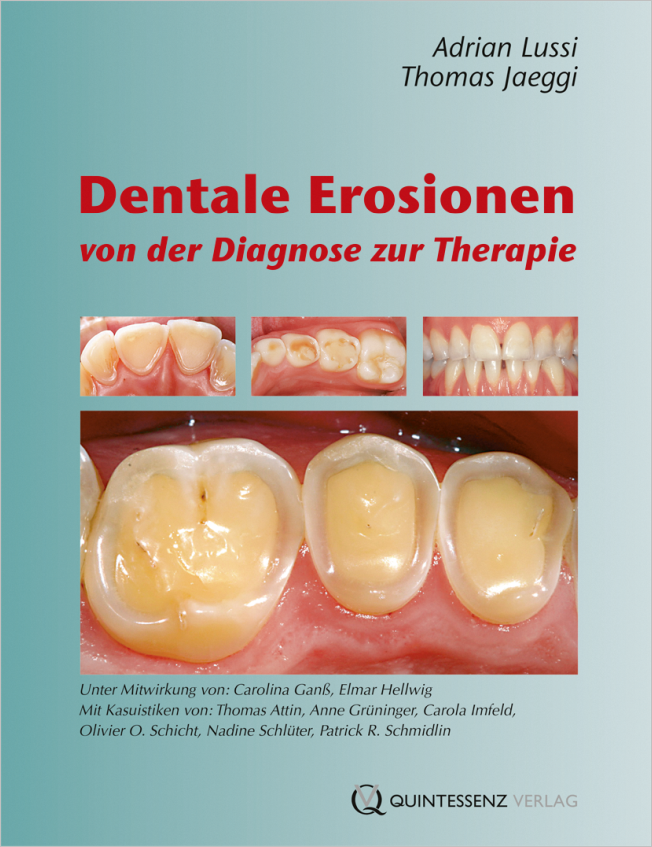Quintessence International, 10/2024
DOI: 10.3290/j.qi.b5714710, ID de PubMed (PMID): 39190014Páginas 834-843, Idioma: InglésMethuen, Mirja / Suominen, Anna Liisa / Lussi, Adrian / Vähänikkilä, Hannu / Lakka, Timo A. / Anttonen, VuokkoObjective: To evaluate the ability of near-infrared light transillumination (NIR-LT) to detect interproximal enamel and dentinal caries lesions compared to clinical-visual inspection aided by fiber-optic transillumination (FOTI). Method and materials: From 170 Finnish adolescents aged 15 to 17 years, 5,294 interproximal surfaces of premolars and molars were examined first clinical-visually aided by FOTI (VI+FOTI) using the International Caries Detection and Assessment System (ICDAS) classification. Subsequently, the surfaces were examined using NIR-LT. The extent of lesions was determined using the modified NIR-LT classification based on the Söchtig criteria. For the analyses, data on maxillary and mandibular premolars and molars were combined. Distributions of lesions were presented as frequencies. Differences between VI+FOTI and NIR-LT at the tooth and tooth surface levels were analyzed by chi-square and Fisher exact tests. Sensitivity and specificity of the NIR-LT method to detect any lesion was performed using VI+FOTI as the gold standard. Results: By VI+FOTI, 92.4% surfaces were classified as sound and by NIR-LT, 88.2%. Enamel caries lesions were found on 7.0% of the surfaces by VI+FOTI and on 11.6% by NIR-LT. Nearly double the number of enamel lesions were identified by NIR-LT for all examined teeth groups, except for mandibular molars where this was 1.3-fold. In 66% of the surfaces, the differences between NIR-LT and VI+FOTI findings were statistically significant (P .001). The sensitivity for all teeth of NIR-LT was 48.4% and the specificity was 91.1%. Conclusion: Radiation-free NIR-LT method shows considerable potential as a supplementary method for early detection of caries lesions among low-caries prevalence adolescents.
Palabras clave: adolescent, caries detection, enamel caries, interproximal caries, NIR-LT, radiation-free
Oral Health and Preventive Dentistry, 1/2024
Acceso libre Sólo en líneaOral HealthDOI: 10.3290/j.ohpd.b5656322, ID de PubMed (PMID): 39105316agosto 6, 2024,Páginas 389-398, Idioma: InglésRusyan, Ewa / Strużycka, Izabela / Lussi, Adrian / Grabowska, Ewa / Mielczarek, AgnieszkaPurpose: To investigate the prevalence and severity of erosive tooth wear (ETW) and evaluate the determinants of ETW among adolescents and adults in Poland. Materials and Methods: The study covered three age groups of patients: 15 years old, 18 years old, and adults aged 35-44 years. Calibrated examiners measured ETW according to the Basic Erosive Wear Examination (BEWE) scoring system in 6091 patients. The clinical examination of patients was preceded by a socio-medical study based on a questionnaire consisting of items identifying potential risk factors for ETW. Results: In all age groups, erosive lesions were most common in the form of initial enamel damage; more advanced lesions (BEWE 2 and 3) were rarely observed among 15-year-olds, while in the group of older adolescents and adults, the percentages were 13% and 20%, respectively. Acidic diet, gender, level of education, and medical conditions were statistically significantly associated with ETW in the examined population. The analysis showed that, depending on age, multiple and statistically significant risk factors for ETW become most apparent in the 35-44 age group, especially with regard to general health. This suggests that the long-term impact of factors and their cumulative effects are critical to the development of ETW. Conclusions: This is the first large, representative study of ETW in Central and Eastern Europe among adolescents and adults, which indicates the relatively rare occurrence and severity of erosive lesions. The present findings support other longitudinal studies supporting the use of the BEWE system as a valuable standard for assessing erosive lesions and related risk factors among different populations at different ages.
Palabras clave: BEWE, dental erosion, epidemiological study, risk factors
Quintessence International, 9/2021
DOI: 10.3290/j.qi.b1763661, ID de PubMed (PMID): 34269042Páginas 752-762, Idioma: InglésWolgin, Michael / Frankenhauser, Alexandra / Shakavets, Natallia / Bastendorf, Klaus-Dieter / Lussi, Adrian / Kielbassa, Andrej MichaelObjectives: While air polishing with abrasive powders has been proved efficient for sub- and supragingival application, only few studies concerning the quality of supragingival biofilm removal using the low-abrasive erythritol powder (EP) exist. The aim of the present randomized controlled trial was to clinically compare the efficacy of supragingival air polishing using EP in comparison with the rubber cup method, and to juxtapose the corresponding biofilm regrowth rates.
Method and materials: Thirty-two young adults, suspending oral hygiene for 48 hours, were enrolled in the present double-blind short-term investigation. Using a split-mouth design, tooth polishing was conducted by means of either air polishing or rubber cups with prophylaxis paste (control). While 16 participants received air polishing in the second and fourth quadrants (and rubber cup prophylaxis in the first and third ones), the reverse sequence was applied with the remaining 16 subjects. Biofilms were assessed using the modified Quigley-Hein index (QHI), and QHI sum scores achieved both prior to and immediately after the polishing procedure, as well as 24 hours later, were assessed using a two-way analysis of variance (ANOVA), followed by Tukey’s HSD to test multiple pairwise comparisons.
Results: Both methods revealed a significant reduction of QHI scores (P < .001). Compared to the rubber cup method, air polishing resulted in significantly lower scores, both after tooth cleaning and after 24 hours (P < .001).
Conclusions: Supragingival biofilm removal by means of air polishing combined with low-abrasive erythritol seems to be more efficacious than the traditional polishing method, and should improve oral health care.
Palabras clave: air polishing, biofilm, erythritol, low-abrasive powder, oral hygiene, plaque, professional tooth cleaning, rubber cup polishing
Oral Health and Preventive Dentistry, 1/2021
Acceso libre Sólo en líneaPeriodontologyDOI: 10.3290/j.ohpd.b927695, ID de PubMed (PMID): 33511822enero 28, 2021,Páginas 85-92, Idioma: InglésArefnia, Behrouz / Koller, Martin / Wimmer, Gernot / Lussi, Adrian / Haas, MichaelPurpose: To determine how the currently available techniques of scaling and root planing, used either alone or with additional polishing techniques, affect the substance thickness and surface roughness of enamel and cementum.
Materials and Methods: After extraction, impacted third molars were prepared and subjected to air polishing with a nonabrasive powder, ultrasonic scaling, or hand instrumentation. All three techniques were performed alone and in combinations for a total of 9 treatment groups. The control group consisted of untreated surfaces. Optical microcoordination measurements were conducted to separately assess substance loss, mean roughness depth (Rz), and roughness average (Ra) on enamel and cementum. The Rz results were analysed using a t-test for paired samples.
Results: Air polishing alone and with additional rubber-cup polishing using a paste were the only two approaches which caused no enamel loss. Both groups also entailed less cementum loss (≤ 20 μm) than any of the other seven groups, and both yielded the most favorable Rz results on enamel. Air polishing alone was the only group to reveal no significant change in Rz from untreated cementum (p = 0.999). The other 8 approaches statistically significantly reduced the surface roughness of cementum (p ≤ 0.017).
Conclusion: Air polishing with a nonabrasive powder yielded the best hard-tissue preservation. Combining any of the scaling techniques with additional polishing was not beneficial; on the contrary, they caused even more abrasion of hard tissue on both enamel and cementum.
Palabras clave: cementum, enamel, hand instruments, substance loss, surface roughness, ultrasonic air polishing
Quintessenz Zahnmedizin, 5/2020
ZahnerhaltungPáginas 556-564, Idioma: AlemánLussi, Adrian / Schlüter, NadineBei Zahnerosionen ist eine steigende Prävalenz zu beobachten. Aufgrund der irreversiblen Zerstörung und der voranschreitenden Progression kann die Lebensqualität betroffener Personen beeinträchtigt werden. Frühprophylaktische Maßnahmen sind daher von großer Bedeutung. In Beratungsgesprächen mit dem zahnärztlichen Fachpersonal kommt immer wieder die Frage nach der Erosivität verschiedener Getränke und Speisen auf, denn sie spielen eine wichtige, vom Patienten kontrollierbare Rolle bei der Entstehung der Erosionen. Es bestehen beträchtliche Unterschiede hinsichtlich des erosiven Potenzials. So gibt es saure Produkte, die keine Erosionen verursachen, und solche mit höherem pH-Wert, die ein größeres erosives Potenzial aufweisen. Der Beitrag beleuchtet den Einfluss der Ernährung auf die Entstehung und Progression von Erosionen und diskutiert die Frage, was man bei Erosionen besser nicht essen sollte.
Palabras clave: Zahnerosionen, erosiver Zahnverschleiß, pH-Wert, Calciumgehalt, erosives Potenzial, Demineralisation, Zahnhartsubstanzschäden
Oral Health and Preventive Dentistry, 1/2020
Acceso libre Sólo en líneaOral HealthDOI: 10.3290/j.ohpd.a43351, ID de PubMed (PMID): 32515418julio 4, 2020,Páginas 475-483, Idioma: InglésCarvalho, Thiago Saads / Halter, Judith Elisa / Muçolli, Dea / Lussi, Adrian / Eick, Sigrun / Baumann, TommyPurpose: During biofilm formation, bacterial species do not attach directly onto the enamel surface, but rather onto the salivary pellicle. Salivary pellicle modification with casein and mucin can hinder erosive demineralisation of the enamel, but it should also not promote bacterial adhesion. The aim of our study was to assess whether salivary pellicle modification with casein, or mucin, or a mixture of both proteins (casein and mucin) influence bacterial adhesion, biofilm diversity, metabolism and composition, or enamel demineralisation, after incubation in: (a) a single bacterial model; (b) a five-species biofilm model; or (c) biofilm reformation using the five-species biofilm model after removal of initial biofilm with toothbrushing.
Materials and Methods: Enamel specimens were prepared from human molars. Whole-mouth stimulated human saliva was used for pellicle formation. Four pellicle modification groups were established: control (non-modified pellicle); casein – modified with 0.5% casein; mucin – modified with 0.5% mucin; casein and mucin – modified with 0.5% casein and 0.5% mucin. Bacterial adhesion, biofilm diversity, metabolic activity, biofilm mass, and demineralisation (surface hardness) of enamel were assessed after incubation in bacterial broths after 6 h or 24 h.
Results: After 24 h incubation in the five-species biofilm model, the mucin group presented significantly lower biofilm mass than the control (p = 0.028) and the casein and mucin (p = 0.030) groups. No other differences between the groups were observed in any of the other experimental procedures.
Conclusion: Pellicle modification with casein and mucin does not promote in vitro bacterial biofilm formation.
Palabras clave: biofilms, casein, demineralisation, enamel, mucin, salivary pellicle, salivary pellicle modification
Oral Health and Preventive Dentistry, 4/2019
DOI: 10.3290/j.ohpd.a42684, ID de PubMed (PMID): 31204391Páginas 375-383, Idioma: InglésBerto, Luciana Aranha / Lauener, Anic / Carvalho, Thiago Saads / Lussi, Adrian / Eick, SigrunPurpose: The effects of arginine as a toothpaste additive were assessed on oral streptococci with and without a known arginine deiminase system (ADS) and cariogenic biofilms.
Materials and Methods: Suspensions of Streptococcus mutans, S. sobrinus and the ADS-positive (ADS+) S. sanguinis and S. gordonii were cultured with or without 1.5% L-arginine for 24 h. Thereafter, biofilms consisting of the four species were formed on polystyrene surfaces with or without 1.5% L-arginine for up to 10 d. Finally, biofilms that formed on enamel surfaces were exposed to a daily mechanical cleaning with an arginine and sodium monofluorophosphate (SMF+Arg)-containing toothpaste, a sodium monofluorophosphate fluoride (SMF)-containing toothpaste or a negative control for up to 10 weeks. At different incubation times, the pH in the culture media, the citrulline production and the percent of ADS+ bacteria within the biofilms were determined. Microsurface hardness loss was quantified in the experiments using enamel specimens.
Results: In the presence of 1.5% arginine, S. sanguinis and S. gordonii showed a high level of production of citrulline after 6 h of incubation, together with an increase in the pH when compared to S. mutans and S. sobrinus. With arginine supplementation, the percentage of ADS+ species was higher at 1, 2 and 4 days and citrulline production was higher at all days of biofilm formation on polystyrene surfaces. After 4 and 10 weeks of treating biofilms on enamel surfaces, the SMF+Arg group had a higher proportion of ADS+ strains than the SMF group; at 4 weeks, the pH was higher in the SMF+Arg group. Loss of enamel hardness was the lowest in the SMF+Arg group and was significantly less in the SMF+Arg group than in the control group after 2, 4 and 10 weeks of treatment.
Conclusion: Toothbrushing using an arginine-containing toothpaste may protect against dental caries.
Palabras clave: arginine, citrulline, multispecies biofilm, microsurface hardness, oral streptococci
Oral Health and Preventive Dentistry, 3/2019
DOI: 10.3290/j.ohpd.a42663, ID de PubMed (PMID): 31209447Páginas 267-275, Idioma: InglésRodrigues, Hermanda Barbosa / Guedes, Ieda Xavier / Guaré, Renata de Oliveira / Leal, Soraya Coelho / Lussi, Adrian / Diniz, Michele BaffiPurpose: Using the ICDAS (International Caries Detection and Assessment System), to assess caries experience in the primary dentition of preschool children living in a socioeconomically poor area with a nonfluoridated water supply, and to compare the stages of caries manifestation between children from private and public schools.
Materials and Methods: This census included all children aged 3 to 5 years from public and private schools from Teixeira, Brazil. Clinical examinations were carried out by two calibrated examiners using ICDAS, the results of which were converted into components of dmf-s and dmf-t.
Results: The majority of children had caries; the prevalence of enamel and dentin lesions was 81.7%. The prevalence of dentin lesions alone was 62.1%. The mean values of the d2mf2-s/d2mf2-t indices (enamel and dentin lesions) and d3mf3-s/d3mf3-t indices (dentin lesions) were 13.5 ± 14.9/6.8 ± 5.8 and 7.4 ± 10.9/3.0 ± 3.6, respectively. There was no significant difference between the dmf-s/dmf-t indices of children from private vs public schools (p > 0.05).
Conclusion: Caries was highly prevalent in the primary dentition of this Brazilian population, and the presence of noncavitated lesions was the most prevalent condition. Children from private and public schools showed similar caries experience.
Palabras clave: dental caries, ICDAS, oral health, preschool children, primary teeth
Quintessenz Zahnmedizin, 3/2018
ProthetikPáginas 270-283, Idioma: AlemánLoomans, Bas / Opdam, Niek / Attin, Thomas / Bartlett, David / Edelhoff, Daniel / Frankenberger, Roland / Benic, Goran / Ramseyer, Simon / Wetselaar, Peter / Sterenborg, Bernadette / Hickel, Reinhard / Pallesen, Ulla / Mehta, Shamir / Banerji, Subir / Lussi, Adrian / Wilson, NairnDer Beitrag fasst die europäische Konsensus-Leitlinie zur zahnärztlichen Therapie bei fortgeschrittenem Zahnhartsubstanzverlust zusammen. Er fokussiert auf die Definition von physiologischem versus pathologischem Zahnhartsubstanzverlust und empfiehlt, die Diagnostik, Prävention, Aufklärung und Überwachung auf die Ätiologie, die Art und das Ausmaß des pathologischen Zahnhartsubstanzverlustes sowie Mittel zu seiner Kontrolle auszurichten. Therapieentscheidungen werden von vielen Faktoren beeinflusst und sind sowohl vom Schweregrad und von den klinischen Auswirkungen des Zahnhartsubstanzverlustes als auch von den Wünschen des Patienten abhängig. Idealerweise werden restaurative Maßnahmen so lange wie möglich hinausgezögert. Wenn eine solche Intervention indiziert ist und der betroffene Patient zustimmt, wird ein konservierender minimalinvasiver Ansatz mit ergänzenden Präventionsmaßnahmen empfohlen. Beispielhaft werden adhäsive minimalinvasive Therapiekonzepte vorgestellt.
Palabras clave: Zahnhartsubstanzverlust, Entscheidungsfindung, restaurative Behandlung, direkte Restauration, indirekte Restauration
The Journal of Adhesive Dentistry, 2/2017
DOI: 10.3290/j.jad.a38102, ID de PubMed (PMID): 28439579Páginas 111-119, Idioma: InglésLoomans, Bas / Opdam, Niek / Attin, Thomas / Bartlett, David / Edelhoff, Daniel / Frankenberger, Roland / Benic, Goran / Ramseyer, Simon / Wetselaar, Peter / Sterenborg, Bernadette / Hickel, Reinhard / Pallesen, Ulla / Mehta, Shamir / Banerji, Subir / Lussi, Adrian / Wilson, NairnThis paper presents European expert consensus guidelines on the management of severe tooth wear. It focuses on the definition of physiological vs pathological tooth wear and recommends diagnosis, prevention, counseling, and monitoring aimed at elucidating the etiology, nature, rate and means of controlling pathological tooth wear. Management decisions are multifactorial, depending principally on the severity and effects of the wear and the wishes of the patient. Restorative intervention is typically best delayed as long as possible. When such intervention is indicated and agreed upon with the patient, a conservative, minimally invasive approach is recommended, complemented by supportive preventive measures. Examples of adhesive, minimum-intervention management protocols are presented.
Palabras clave: tooth wear, decision making, restorative treatment, direct, indirect








